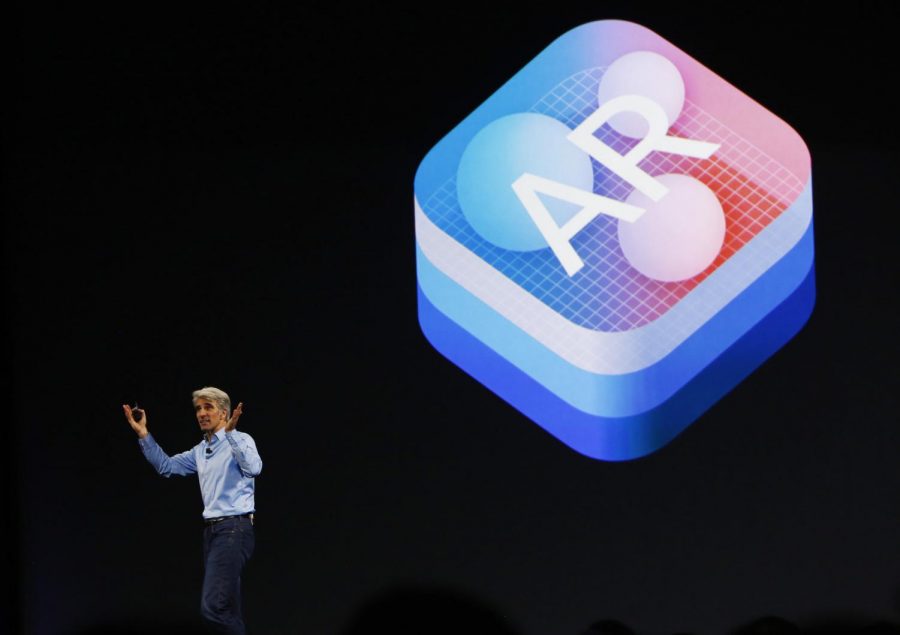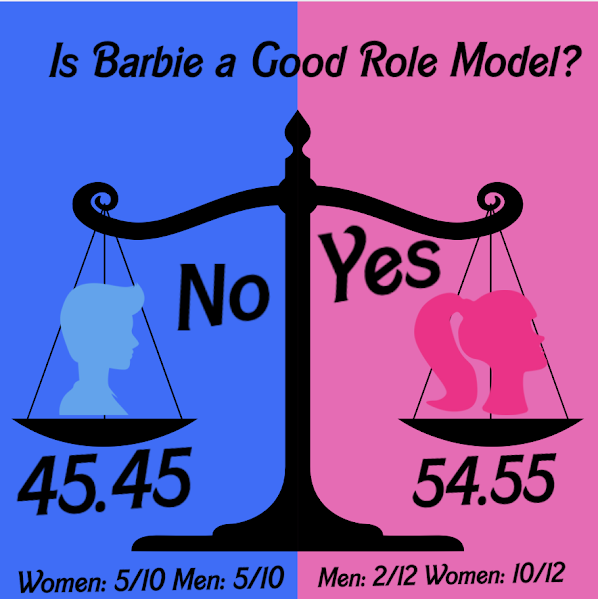Is iPhone X Overhyped?
Apple Senior Vice President of Software Engineering Craig Federighi talks about augmented reality on Monday, June 5, 2017 at the Worldwide Developers Conference at the McEnery Convention Center in San Jose, California. The iPhone X’s augmented reality features have been lamented by critics as a disappointing miscalculation of focus by Apple, and served primarily as a flashy, but shallow spectacle. (Gary Reyes/Bay Area News Group/TNS)
Ten years ago, Apple released the iPhone: four and a half inches tall, two and a half inches wide, and eight whole gigabytes of memory. It sold six million units, was awarded the “Invention of the Year” by Time Magazine, and was hailed as revolutionary. Sadly, the iPhone has outlived its former glory, just as Apple celebrates its tenth birthday.
It was clear from the get-go that this was the future of communication in the 21st century. Apple continued to push the boundaries of what the general public believed a cell phone could and should do, bolstering a reputation for sleek design, user-friendly interfaces, high-definition cameras and an emphasis on music-consuming software.
Yet the iPhone has reached and passed its peak of technological prowess, and it’s only a matter of time before it passes its peak of cultural saturation. This downward dive began at the reveal of the iPhone 7 in late 2016. The reveal gained heavy news and social media attention, due to the controversial removal of the 3.5 millimeter headphone jack. With this, buyers were faced with two options: Apple Airpods, wireless Bluetooth earbuds that are only capable of holding five hours’ worth of battery life and cost $159.99, or an adaptor dongle that is inserted into the charging port, which removes the ability for users to listen to music while their phone is charging.
This move from Apple seemed redundant at best and moronic at worst, and the general public struggled to understand why Apple would sacrifice such a basic convenience and complicate what was, for a long time, the company’s commercial emphasis: listening to music.
These redundant changes are due to Apple’s misplaced emphasis during the earlier years the iPhone. From the earliest models, the goal was never to create the most technologically revolutionary phone. The focus was always on presentation and accessibility, and when one compares the first-generation iPhone to other cell phones on the market (mostly flip phones and Blackberry models, it’s easy to see why it had as much commercial success as it did.
However, ten years later, the market has changed. Samsung’s line of Galaxy S and Galaxy Note smartphones have provided a great deal of resistance against Apple’s monopoly over the smartphone market, and in recent years, both Google and Microsoft have thrown their hats into the smartphone ring with the Pixel and the Windows Phone respectively. Now that Apple’s competitors have caught up with the iPhone’s sleek design and arguably surpassed the iPhone’s hardware, what does Apple have to fall back on?
The answer seems to be their image in the Media.
There’s an age-old adage that ‘all press is good press,’ and when you look at Apple’s approach to Public Relations in the past few years, it’s easy to see the truth in that adage. From the iPhone 6 bending, to the iPhone 7’s removed headphone jack, to the iPhone 8’s near-Orwellian facial recognition software, Apple has turned its press releases from decade-defining moments to media circuses. No matter how mad Twitter gets over every illogical new feature in the newest iPhone, as long as it’s being talked about, Apple is going to benefit from it.
So, is the iPhone X overhyped? Yes, absolutely, and Apple knows it. They know that as long as they cause controversy, make headlines, and fuel the fire between die-hard Apple fans and die-hard Apple adversaries, they’ll move units.






